Tamil Nadu (/ˌtæmɪl ˈnɑːduː/; Tamil: [ˈtamiɻ ˈnaːɽɯ] (![]() listen)) is a state in South India. Its capital and largest city is Chennai. Tamil Nadu lies in the southernmost part of the Indian subcontinent and is bordered by the union territory of Puducherry and the South Indian states of Kerala, Karnataka, and Andhra Pradesh. It is bounded by the Eastern Ghats on the north, by the Nilgiri Mountains, the Meghamalai Hills, and Kerala on the west, by the Bay of Bengal in the east, by the Gulf of Mannar and the Palk Strait on the southeast, and by the Indian Ocean on the south. The state shares a maritime border with the nation of Sri Lanka. Its official language is Tamil, which is one of the longest-surviving classical languages in the world.
listen)) is a state in South India. Its capital and largest city is Chennai. Tamil Nadu lies in the southernmost part of the Indian subcontinent and is bordered by the union territory of Puducherry and the South Indian states of Kerala, Karnataka, and Andhra Pradesh. It is bounded by the Eastern Ghats on the north, by the Nilgiri Mountains, the Meghamalai Hills, and Kerala on the west, by the Bay of Bengal in the east, by the Gulf of Mannar and the Palk Strait on the southeast, and by the Indian Ocean on the south. The state shares a maritime border with the nation of Sri Lanka. Its official language is Tamil, which is one of the longest-surviving classical languages in the world.
The region was ruled by several regimes, including the "three crowned rulers" – Chera, Chola and Pandyan states, which shape the region's cuisine, culture, and architecture. After the fall of the Kingdom of Mysore, the British Colonial rule during the modern period led to the emergence of Chennai, then known as Madras, as a metropolitan city. Modern-day Tamil Nadu was formed in 1956 after the reorganisation of states on linguistic lines. The state is home to a number of historic buildings, multi-religious pilgrimage sites, hill stations and three World Heritage sites.[8][9][10]
The economy of Tamil Nadu is the second-largest in India, with a gross state domestic product (GSDP) of ₹21.6 trillion (US$300 billion) and has the country's 11th-highest GSDP per capita of ₹229,000 (US$3,200).[3] It ranks 11th among all Indian states in human development index.[6] Tamil Nadu is the most urbanised state in India, and one of the most industrialised states; the manufacturing sector accounts for more than one-third of the state's GDP.[11] Tamil Nadu is the tenth largest Indian state by area and the sixth largest by population.
Prehistory
Archaeological evidence points to this area being one of the longest continuous habitations in the Indian peninsula.[12] In Attirampakkam near Chennai, archaeologists from the Sharma Centre for Heritage Education excavated ancient stone tools which suggest that a humanlike population existed in the Tamil Nadu region somewhere around 1,000 years before homo sapiens arrived from Africa.[13][14] A Neolithic stone celt (a hand-held axe) with the Indus script on it was discovered at Sembian-Kandiyur near Mayiladuthurai in Tamil Nadu. According to epigraphist Iravatham Mahadevan, this was the first datable artefact bearing the Indus script to be found in Tamil Nadu. According to Mahadevan, the find was evidence of the use of the Harappan language, and therefore that the "Neolithic people of the Tamil country spoke a Harappan language". The date of the celt was estimated at between 1500 BCE and 2000 BCE.[15][16][17] In Adichanallur, 24 km (15 mi) from Tirunelveli, archaeologists from the Archaeological Survey of India (ASI) unearthed 169 clay urns containing human skulls, skeletons, bones, husks, grains of rice, charred rice, and celts of the Neolithic period, 3,800 years ago.[18] The ASI archaeologists have proposed that the script used at that site, Tamil Brahmi, is "very rudimentary" and date it somewhere between the 5th century BCE and 3rd century BCE.[19][20] About 60 per cent of the total epigraphical inscriptions found by the ASI in India are from Tamil Nadu, and most of these are in the Tamil language.[21][22][23][24][25][26][27][28] In Keezhadi near Madurai, excavations have revealed a large urban settlement dating to the 6th century BCE, during the time of urbanisation in the Gangetic plain. During this dig, some potsherds were uncovered with a script similar to Indus script, leading some to conclude it was a transition between the Indus Valley script and Tamil Brahmi script used in the Sangam period.[29]
Sangam period (500 BCE–300 CE)
The early history of the people and rulers of Tamil Nadu is a topic in Tamil literary sources known as Sangam literature. Numismatic, archaeological and literary sources corroborate that the Sangam period lasted for about eight centuries, from 500 BCE to 300 CE. The recent excavations in Alagankulam archaeological site suggests that Alagankulam is one of the important trade centers or port cities of the Sangam Era.[31]
Ancient Tamil Nadu contained three monarchical states, headed by kings called Vendhar and several tribal chieftaincies, headed by the chiefs called by the general denomination Vel or Velir. Still lower at the local level there were clan chiefs called kizhar or mannar.[32] The kings were known as the Moovendar, the three crowned kings, and were the Cheras, Cholas and Pandyas. The Cheras controlled the western part of Tamilkam, what is today western Tamil Nadu and Kerala. The Pandyas controlled the south, what is today southern Tamil Nadu. The Cholas had their base in the Kaveri delta and controlled what is today northern Tamil Nadu. Although these dynasties were never conquered by outside powers, there were still significant diplomatic contacts between them and kingdoms to the north. They were mentioned on the pillars of Ashoka.[33]
These rulers sponsored some of the earliest Tamil literature. The oldest Sangam work we have knowledge of is the Tolkappiyam, a book of Tamil grammar. Most Sangam literature dealt with themes of love and war. In these poems, a glimpse of Tamil society at the time can be glimpsed. The land was fertile, and people pursued different occupations depending on what regions they were in. Their gods included figures such as Seyyon and Kotravai, who were worshipped at different places.[34] The rulers patronised Buddhism and Jainism, and starting in the CE period references to Vedic customs begin to grow.[35]
Significant trade was also undertaken with the outside world. Much commerce from the Romans and Han China converged in the Tamil region, and the seaports of Muziris and Korkai were very popular destinations.[36] One of the most prized goods from Tamilkam was spices such as black pepper, but other spices, pearls and silk were also widely traded there.[37]
Starting in 300, however, there was a significant drop in Sangam literature. Some have attributed this to the Kalabhras, a dynasty which conquered much of Tamilkam during that time. Historians have speculated these rulers were antagonistic towards the astika schools which were dominant in later centuries, which is why later texts always portray their rule in a bad light, if at all.[38] During their rule, Samanar traditions greatly impacted literature written during this time. Literacy was widespread and epics such as the Cilappatikaram were written. The most prominent of these works is the Tirukkuṟaḷ written by Valluvar, a collection of couplets covering all aspects of life from ethics to love. This text is still treated with great reverence by those in the present-day.[39] Around the 7th century CE, the Kalabhras were overthrown by the Pandyas and Cholas,[40] who continued to patronise Buddhists and Jains before the Saiva and Vaishnava revivalism in the Bhakti movement.[41]
Middle Kingdoms (600–1300 CE)
During the 4th to 8th centuries, Tamil Nadu saw the rise of the Pallava dynasty under Mahendravarman I and his son Mamalla Narasimhavarman I.[46] The Pallavas ruled parts of South India with Kanchipuram as their capital. Tamil architecture reached its peak during Pallava rule. Narasimhavarman II built the Shore Temple which is a UNESCO World Heritage Site.
Much later, the Pallavas were replaced by the Chola dynasty as the dominant kingdom in the 9th century and they in turn were replaced by the Pandyan Dynasty in the 13th century. The Pandyan capital Madurai was in the deep south away from the coast. They had extensive trade links with the southeast Asian maritime empires of Srivijaya and their successors, as well as contacts, even formal diplomatic contacts, reaching as far as the Roman Empire. During the 13th century, Marco Polo mentioned the Pandyas as the richest empire in existence. Temples such as the Meenakshi Amman Temple at Madurai and Nellaiappar Temple at Tirunelveli are the best examples of Pandyan temple architecture.[47] The Pandyas excelled in both trade and literature. They controlled the pearl fisheries along the south coast of India, between Sri Lanka and India, which produced some of the finest pearls in the known ancient world.
Chola Empire
During the 9th century, the Chola dynasty was once again revived by Vijayalaya Chola, who established Thanjavur as Chola's new capital by conquering central Tamil Nadu from Mutharaiyar and the Pandya king Varagunavarman II. Aditya I and his son Parantaka I expanded the kingdom to the northern parts of Tamil Nadu by defeating the last Pallava king, Aparajitavarman. Parantaka Chola II expanded the Chola empire into what is now interior Andhra Pradesh and coastal Karnataka, while under the great Rajaraja Chola and his son Rajendra Chola, the Cholas rose to a notable power in southeast Asia. Now the Chola Empire stretched as far as Bengal and Sri Lanka. At its peak, the empire spanned almost 3,600,000 km2 (1,400,000 sq mi). Rajaraja Chola conquered all of peninsular South India and parts of Sri Lanka. Rajendra Chola's navy went even further, occupying coasts from Burma (now) to Vietnam, the Andaman and Nicobar Islands, Lakshadweep, Sumatra, Java, Malaya, Philippines[48] in South East Asia and Pegu islands. He defeated Mahipala, the king of Bengal, and to commemorate his victory he built a new capital and named it Gangaikonda Cholapuram.
The Cholas were prolific temple builders right from the times of the first medieval king Vijayalaya Chola. These are the earliest specimen of Dravidian temples under the Cholas. His son Aditya I built several temples around the Kanchi and Kumbakonam regions. The Cholas went on to becoming a great power and built some of the most imposing religious structures in their lifetime and they also renovated temples and buildings of the Pallavas, acknowledging their common socio-religious and cultural heritage. The celebrated Nataraja temple at Chidambaram and the Ranganathaswamy Temple at Srirangam, Tiruchirappalli, held special significance for the Cholas which have been mentioned in their inscriptions as their tutelary deities. Rajaraja Chola I and his son Rajendra Chola built temples such as the Brihadeshvara Temple of Thanjavur and Brihadeshvara Temple of Gangaikonda Cholapuram, the Airavatesvara Temple of Darasuram and the Sarabeswara (Shiva) Temple, also called the Kampahareswarar Temple at Thirubhuvanam, the last two temples being located near Kumbakonam. The first three of the above four temples are titled Great Living Chola Temples among the UNESCO World Heritage Sites.
Vijayanagar and Nayak period (1336–1646)
The Muslim invasions of southern India triggered the establishment of the Hindu Vijayanagara Empire with Vijayanagara in modern Karnataka as its capital. The Vijayanagara empire eventually conquered the entire Tamil country by c. 1370 and ruled for almost two centuries until its defeat in the Battle of Talikota in 1565 by a confederacy of Deccan sultanates. Subsequently, as the Vijayanagara Empire went into decline after the mid-16th century, many local rulers, called Nayaks, succeeded in gaining the trappings of independence. This eventually resulted in the further weakening of the empire; many Nayaks declared themselves independent, among whom the Nayaks of Madurai and Tanjore were the first to declare their independence, despite initially maintaining loose links with the Vijayanagara kingdom.[47] The Nayaks of Madurai and Nayaks of Thanjavur were the most prominent Nayaks of the 17th century. They reconstructed some of the well-known temples in Tamil Nadu such as the Meenakshi Temple.
Power struggles of the 18th century (1688–1802)
By the early 18th century, the political scene in Tamil Nadu saw a major change-over and was under the control of many minor rulers aspiring to be independent. The fall of the Vijayanagara empire and the Chandragiri Nayakas gave the sultanate of Golconda a chance to expand into the Tamil heartland. When the sultanate was incorporated into the Mughal Empire in 1688, the northern part of current-day Tamil Nadu was administrated by the Nawab of the Carnatic, who had his seat in Arcot from 1715 onward. Meanwhile, to the south, the fall of the Thanjavur Nayaks led to a short-lived Thanjavur Maratha kingdom. The fall of the Madurai Nayaks brought up many small Nayakars of southern Tamil Nadu, who ruled small parcels of land called Palayams. The chieftains of these Palayams were known as Palaiyakkarar (or 'polygar' as called by British) and were ruling under the nawabs of the Carnatic.
Europeans started to establish trade centers during the 17th century in the eastern coastal regions. Around 1609, the Dutch established a settlement in Pulicat,[49] while the Danes had their establishment in Tharangambadi also known as Tranquebar.[50] In 1639, the British, under the East India Company, established a settlement further south of Pulicat, in present-day Chennai. British constructed Fort St. George[51] and established a trading post at Madras.[52] The office of mayoralty of Madras was established in 1688. The French established trading posts at Pondichéry by 1693. The British and French were competing to expand the trade in the northern parts of Tamil Nadu which also witnessed many battles like Battle of Wandiwash as part of the Seven Years' War.[53] British reduced the French dominions in India to Puducherry. Nawabs of the Carnatic bestowed tax revenue collection rights on the East India Company for defeating the Kingdom of Mysore. Muhammad Ali Khan Wallajah surrendered much of his territory to the East India Company which firmly established the British in the northern parts. In 1762, a tripartite treaty was signed between Thanjavur Maratha, Carnatic, and the British by which Thanjavur became a vassal of the Nawab of the Carnatic which eventually ceded to the British.
In the south, Nawabs granted taxation rights to the British which led to conflicts between British and the Palaiyakkarar, which resulted in series of wars called Polygar war to establish independent states by the aspiring Palaiyakkarar. Puli Thevar was one of the earliest opponents of the British rule in South India.[54] Thevar's prominent exploits were his confrontations with Marudhanayagam, who later rebelled against the British in the late 1750s and early 1760s. Rani Velu Nachiyar, was the first woman freedom fighter of India and Queen of Sivagangai.[55] She was drawn to war after her husband Muthu Vaduganatha Thevar (1750–1772), King of Sivaganga was murdered at Kalayar Kovil temple by British. Before her death, Queen Velu Nachi granted powers to the Maruthu brothers to rule Sivaganga.[56] Kattabomman (1760–1799), Palaiyakkara chief of Panchalakurichi who fought the British in the First Polygar War.[57] He was captured by the British at the end of the war and hanged near Kayattar in 1799. Veeran Sundaralingam (1700–1800) was the General of Kattabomman Nayakan's palayam, who died in the process of blowing up a British ammunition dump in 1799 which killed more than 150 British soldiers to save Kattapomman Palace. Oomaithurai, younger brother of Kattabomman, took asylum under the Maruthu brothers, Periya Marudhu and Chinna Marudhu and raised an army.[58] They formed a coalition with Dheeran Chinnamalai and Kerala Varma Pazhassi Raja, which fought the British in Second Polygar Wars. Dheeran Chinnamalai (1756–1805), Polygar chieftain of Kongu and ally of Tipu Sultan who fought the British in the Second Polygar War. After winning the Polygar wars in 1801, the East India Company consolidated most of southern India into the Madras Presidency.
The Pudukkottai Thondaimans rose to power over the Pudukkottai area by the end of the 17th Century. The Pudukkottai kingdom has the distinction of being the only princely state in Tamil Nadu, and only became part of the Indian union in 1948 after independence.[59]
Vellore Mutiny and Indian Rebellion (1801–1947 CE)
At the beginning of the 19th century, the British firmly established governance over the entirety of Tamil Nadu. The Vellore mutiny on 10 July 1806 was the first instance of a large-scale mutiny by Indian sepoys against the British East India Company, predating the Indian Rebellion of 1857 by half a century.[60] The revolt, which took place in Vellore, was brief, lasting one full day, but brutal as mutineers broke into the Vellore fort and killed or wounded 200 British troops, before they were subdued by reinforcements from nearby Arcot.[61][62]
The British Raj was formed after the British crown took over the control governance from the company and the remainder of the 19th century did not witness any native resistance until the beginning of 20th century Indian Independence movement. During the administration of Governor George Harris (1854–1859) measures were taken to improve education and increase the representation of Indians in the administration. Legislative powers are given to the Governor's council under the Indian Councils Act 1861 and 1909 Minto-Morley Reforms eventually led to the establishment of the Madras Legislative Council. Failure of the summer monsoons and administrative shortcomings of the Ryotwari system resulted in two severe famines in the Madras Presidency, the Great Famine of 1876–78 and the Indian famine of 1896–97 killed millions of Tamils.[63] The famine led to the migration of many Tamil peasants as bonded labourers for the British to countries like Malaysia and Mauritius, which eventually formed the present Tamil diaspora.
Tamil Nadu provided a significant number of freedom fighters to the Independence struggle such as V. O. Chidambaram Pillai and Bharatiyar.[64] The Tamils (particularly Tamil Malaysians) formed a significant percentage of the members of the Indian National Army (INA), founded by Subhas Chandra Bose to fight the British colonial rule in India.[65][66] Lakshmi Sahgal from Tamil Nadu was a prominent leader in the INA's Rani of Jhansi Regiment.
In 1916 Dr. T.M. Nair and Rao Bahadur Thygaraya Chetty released the Non-Brahmin Manifesto[67] and helped to form the Justice Party, an organisation that sought to reduce Brahmin domination of the civil service. The party won the legislative assembly elections of 1921, which was boycotted by the Congress. This party implemented reservations in government jobs and education for non-Brahmins in 1926, and stayed in power for 13 years. The other main movement was the self-respect movement of E. V. Ramaswamy, better known as Periyar. Periyar campaigned for an end to what he saw as Aryan domination of culture and life in Tamil Nadu. To this end, he became an advocate of rationalism, and campaigned against the caste system, religion, and superstition.[67]
Further steps towards eventual self-rule were taken in 1935 when the British Government passed the Government of India Act 1935. Fresh local elections were held and in Tamil Nadu the Congress party captured power defeating the Justice party. In 1938, Periyar along with C. N. Annadurai launched an agitation against the Congress ministry's decision to introduce the teaching of Hindi in schools. Thereafter, the Justice party was taken over by Periyar who renamed it Dravidar Kazhagam and took it out of electoral politics. The group became an advocate for a separate Dravida Nadu (lit. land of the Dravidians) during discussions of the partition of India.[68]
Post-Independence (1947–present)
When India became independent in 1947, Madras presidency became Madras State, comprising present-day Tamil Nadu and coastal Andhra Pradesh, South Canara district of Karnataka, and parts of Kerala. The state was subsequently split up along linguistic lines. In 1969, Madras State was renamed Tamil Nadu, meaning "Tamil country".[69]
Geography
Tamil Nadu covers an area of 130,058 km2 (50,216 sq mi), and is the tenth-largest state in India. The bordering states are Kerala to the west, Karnataka to the north-west and Andhra Pradesh to the north. To the east is the Bay of Bengal and the state encircles the union territory of Puducherry. The southernmost tip of the Indian Peninsula is Kanyakumari which is the meeting point of the Arabian Sea, the Bay of Bengal, and the Indian Ocean.
The western, southern, and the northwestern parts are hilly and rich in vegetation. The Western Ghats and the Eastern Ghats meet at the Nilgiri Hills. The Western Ghats traverse the entire western border with Kerala, effectively blocking much of the rain-bearing clouds of the south-west monsoon from entering the state. The eastern parts are fertile coastal plains and the northern parts are a mix of hills and plains. The central and the south-central regions are arid plains and receive less rainfall than the other regions.
Tamil Nadu has the country's third-longest coastline at about 906.9 km (563.5 mi).[70] Pamban Island and a group of smaller limestone shoals make up the northern portion of Ram Setu, which was formerly a natural bridge linking India with Sri Lanka. Tamil Nadu's coastline bore the brunt of the 2004 Indian Ocean tsunami when it hit India, which caused 7,793 direct deaths in the state. Tamil Nadu falls mostly in a region of low seismic hazard with the exception of the western border areas that lie in a low to moderate hazard zone; as per the 2002 Bureau of Indian Standards (BIS) map, Tamil Nadu falls in Zones II and III. Historically, parts of this region have experienced seismic activity in the M5.0 range.[71]
Climate
Tamil Nadu is mostly dependent on monsoon rains and thereby is prone to droughts when the monsoons fail. The climate of the state ranges from dry sub-humid to semi-arid. The state has two distinct periods of rainfall:
- South west monsoon from June to September, with strong southwest winds;
- North east monsoon from October to December, with dominant northeast winds;
The annual rainfall of the state is about 945 mm (37.2 in) of which 48 per cent is through the northeast monsoon, and 32 per cent through the southwest monsoon. Since the state is entirely dependent on rains for recharging its water resources, monsoon failures lead to acute water scarcity and severe drought.[72] Tamil Nadu is divided into seven agro-climatic zones: northeast, northwest, west, southern, high rainfall, high altitude hilly, and Kaveri Delta (the most fertile agricultural zone).
Flora and fauna
There are about 2,000 species of wildlife that are native to Tamil Nadu. Protected areas provide safe habitat for large mammals including elephants, tigers, leopards, wild dogs, sloth bears, gaurs, lion-tailed macaques, Nilgiri langurs, Nilgiri tahrs, grizzled giant squirrels and sambar deer, resident and migratory birds such as cormorants, darters, herons, egrets, open-billed storks, spoonbills and white ibizes, little grebes, Indian moorhen, black-winged stilts, a few migratory ducks and occasionally grey pelicans, marine species such as the dugongs, turtles, dolphins, Balanoglossus and a wide variety of fish and insects.
Indian Angiosperm diversity comprises 17,672 species with Tamil Nadu leading all states in the country, with 5640 species accounting for 1/3 of the total flora of India. This includes 1,559 species of medicinal plants, 533 endemic species, 260 species of wild relatives of cultivated plants and 230 red-listed species. The gymnosperm diversity of the country is 64 species of which Tamil Nadu has four indigenous species and about 60 introduced species. The Pteridophytes diversity of India includes 1,022 species of which Tamil Nadu has about 184 species. Vast numbers of bryophytes, lichen, fungi, algae, and bacteria are among the wild plant diversity of Tamil Nadu.
Common plant species include the state tree: palmyra palm, eucalyptus, rubber, cinchona, clumping bamboos (Bambusa arundinacea), common teak, Anogeissus latifolia, Indian laurel, grewia, and blooming trees like Indian labumusum, ardisia, and solanaceae. Rare and unique plant life includes Combretum ovalifolium, ebony (Diospyros nilagrica), Habenaria rariflora (orchid), Alsophila, Impatiens elegans, Ranunculus reniformis, and royal fern.[73]
National and state parks
Tamil Nadu has a wide range of biomes extending east from the South Western Ghats montane rain forests in the Western Ghats through the South Deccan Plateau dry deciduous forests and Deccan thorn scrub forests to tropical dry broadleaf forests and then to the beaches, estuaries, salt marshes, mangroves, seagrasses and coral reefs of the Bay of Bengal. The state has a range of flora and fauna with many species and habitats. To protect this diversity of wildlife there are Protected areas of Tamil Nadu as well as biospheres which protect larger areas of natural habitat often include one or more national parks. The Gulf of Mannar Biosphere Reserve established in 1986 is a marine ecosystem with seaweed seagrass communities, coral reefs, salt marshes, and mangrove forests. The Nilgiri Biosphere Reserve located in the Western Ghats and Nilgiri Hills comprises part of adjoining states of Kerala and Karnataka. The Agasthyamala Biosphere Reserve is in the southwest of the state bordering Kerala in the Western Ghats. Tamil Nadu is home to five declared national parks located in Anamalai, Mudumalai, Mukurithi, Gulf of Mannar, Guindy located in the center of Chennai City and Vandalur located in South Chennai. Sathyamangalam Tiger Reserve, Mukurthi National Park and Kalakkad Mundanthurai Tiger Reserve are the tiger reserves in the state.
Governance and administration
The governor is the constitutional head of the state while the Chief Minister is the head of the government and the head of the council of ministers.[74] The Chief Justice of the Madras High Court is the head of the judiciary.[74] The present governor, Chief Minister and the Chief Justice are Banwarilal Purohit,[75] M. K. Stalin[76] and Sanjib Banerjee[77] respectively. Administratively the state is divided into 38 districts. Chennai, the capital of the state is the fourth largest urban agglomeration in India and is also one of the major metropolitan cities of India. The state comprises 39 Lok Sabha constituencies and 234 Legislative Assembly constituencies.[78]
Tamil Nadu had a bicameral legislature until 1986, when it was replaced with a unicameral legislature, like most other states in India. The term length of the government is five years. The present government is headed by M.K.Stalin of the DMK (Dravida Munnetra Kazhagam) party after his recent victory in the Tamil Nadu Legislative Elections in 2021 . The Tamil Nadu legislative assembly is housed at the Fort St. George in Chennai. The state had come under the President's rule on four occasions – first from 1976 to 1977, next for a short period in 1980, then from 1988 to 1989 and the latest in 1991.
Tamil Nadu has been a pioneering state of E-Governance initiatives in India. A large part of the government records like land ownership records are digitised and all major offices of the state government like Urban Local Bodies – all the corporations and municipal office activities – revenue collection, land registration offices, and transport offices have been computerised. Tamil Nadu is one of the states where law and order have been maintained largely successfully.[79] The Tamil Nadu Police Force is over 140 years old. It is the fifth-largest state police force in India (as of 2015, total police force of TN is 1,11,448) and has the highest proportion of women police personnel in the country (total women police personnel of TN is 13,842 which is about 12.42%) to specifically handled violence against women in Tamil Nadu.[80][81] In 2003, the state had a total police population ratio of 1:668, higher than the national average of 1:717.
Administrative subdivisions
Tamil Nadu is divided into four major divisions as per the ancient Tamil kings namely Pallava Nadu division, Chera Nadu division, Chola Nadu division and Pandya Nadu division and the four divisions are further subdivided into 38 districts, which are listed below. A district is administered by a District Collector who is mostly an Indian Administrative Service (IAS) member, appointed by State Government. Districts are further divided into 226 Taluks administrated by Tahsildars comprising 1127 Revenue blocks administrated by Revenue Inspector (RI). A District has also one or more Revenue Divisions (in total 76) administrated by Revenue Divisional Officer (RDO), constituted by many Revenue Blocks. 16,564 Revenue villages (Village Panchayat) are the primary grassroots level administrative units which in turn might include many villages and administered by a Village Administrative Officer (VAO), many of which form a Revenue Block. Cities and towns are administered by Municipal corporations and Municipalities respectively. The urban bodies include 15 city corporations, 152 municipalities and 529 town panchayats.[82][83][84] The rural bodies include 31 district panchayats, 385 panchayat unions and 12,524 village panchayats.[85][86][87]
Cities and towns
The state capital of Chennai is the most populous city in the state with more than 8,900,000 residents, followed by Coimbatore, Madurai, Trichy and Salem, respectively.[88][89] Chennai is also the sixth-most populous city in India according to the 2011 Indian census.






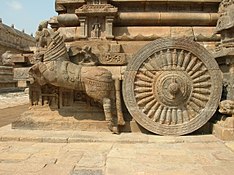

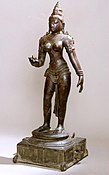


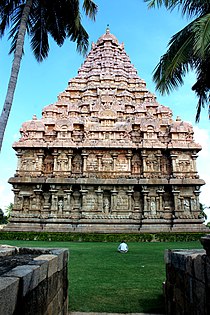
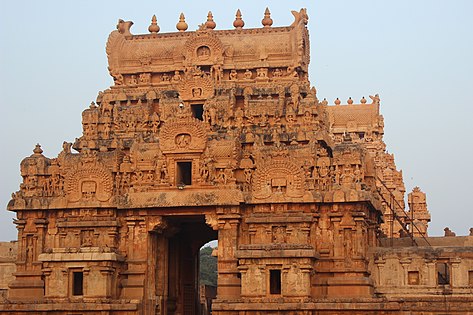




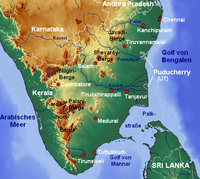






No comments:
Post a Comment